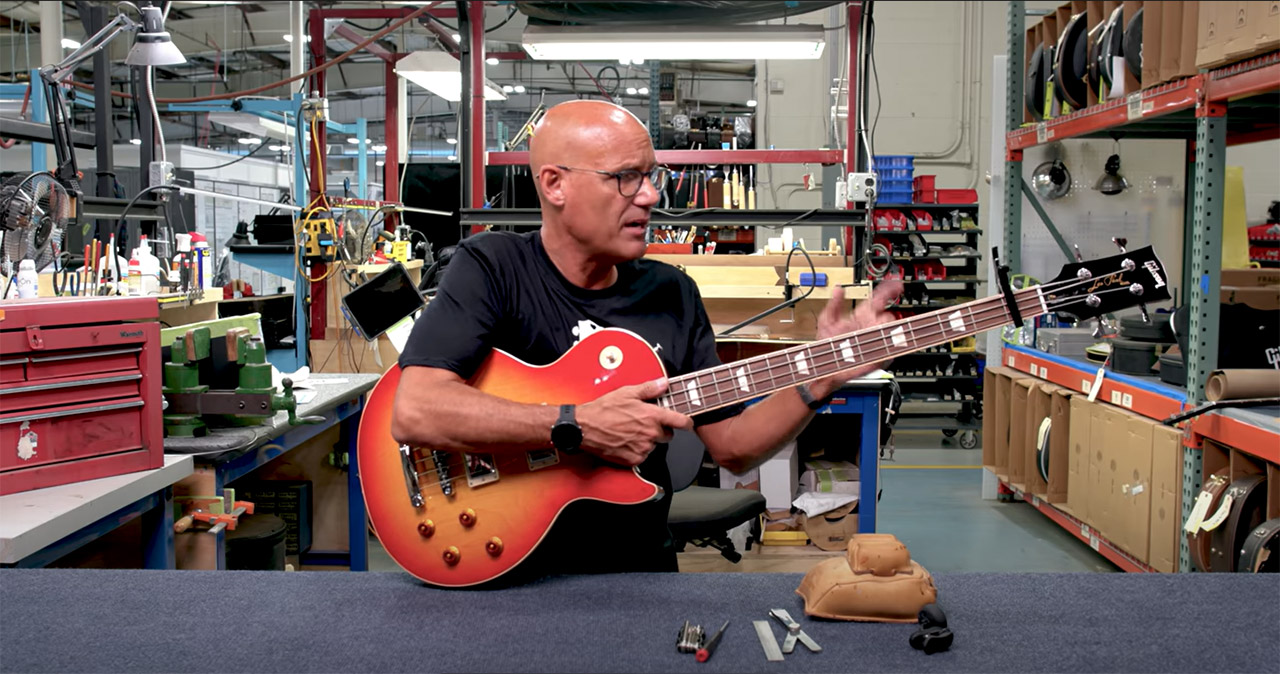Get those low frequencies happening with great intonation and tone
In this episode of “Gibson’s Guide to Guitar Setup and Maintenance,” Gibson Master Luthier Jim DeCola takes viewers through the correct process for setting up a bass guitar. Jim covers all the different setups for the different types of players and their playing styles.
All Gibson bass instruments come set up to factory specs, but as Jim reminds viewers, those specs are based on what and how most players prefer to play. They’re not written in stone, and everyone’s a little different, so there’s room for deviation depending on your preferences.
Jim covers string orbit and excursion, action, and pickup adjustment. So, whether you pluck, pick, pop, or slap, Jim’s no-nonsense, step-by-step instructions are easy to follow and can be executed with a few basic tools and patience.
Digging deeper into the audible spectrum of bass frequencies
Low frequencies and the bass guitar are crucial in shaping rock music’s foundation, providing rhythmic and harmonic support that anchors the entire band. The bass guitar, often underestimated, delivers the essential pulse and groove that syncs with the drums to create the backbone of rock’s dynamic sound. A bass head and cabinet are the foundation of just about every rock outfit.
This combination is pivotal in supporting the tempo and feel of a song, enabling other instruments, like guitars and vocals, to interplay more expressively. The bass helps fill out the sonic spectrum, ensuring the music feels complete and robust. By manipulating the lower frequencies, bassists can evoke different moods and textures, from the aggressive drive of punk rock to the intricate rhythms of progressive rock. And funk—let’s not forget funk, soul, or reggae. Bassists are the be-all and end-all of these rock-adjacent genres.
The bass guitar’s role extends beyond just laying down a groove; it often bridges a band’s rhythmic and melodic components. In many iconic songs, the bassline itself carries a distinctive melody that makes the music instantly recognizable or creates the underlying groove for timeless guitar solos. For instance, the compelling bass parts in songs such as Queen’s “Another One Bites the Dust,” The Who’s “My Generation,” and Rush‘s “Tom Sawyer” demonstrate how the bass guitar can add weight and hooks to a track’s appeal.
The low frequencies produced by the bass also ensure that the music resonates well across various listening environments, from live concerts to headphones, making it integral to the listener’s experience—an indispensable component of any genre’s electrifying essence.
Plus, if you’re looking for new ways to wage war on your bandmates, the low end is where it’s at: infrasound weapons!
Jump into the low end with a Thunderbird bass guitar and check out more essential maintenance tips.

